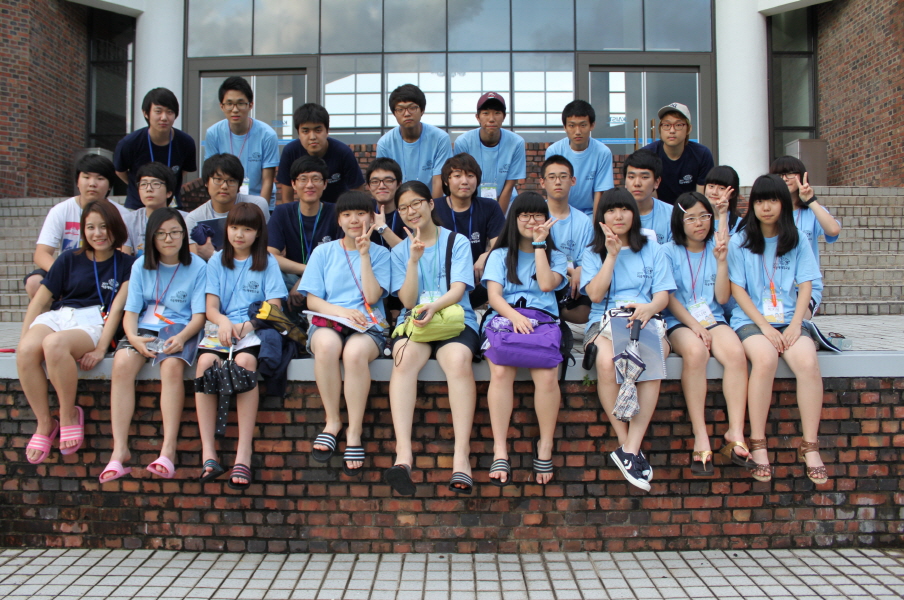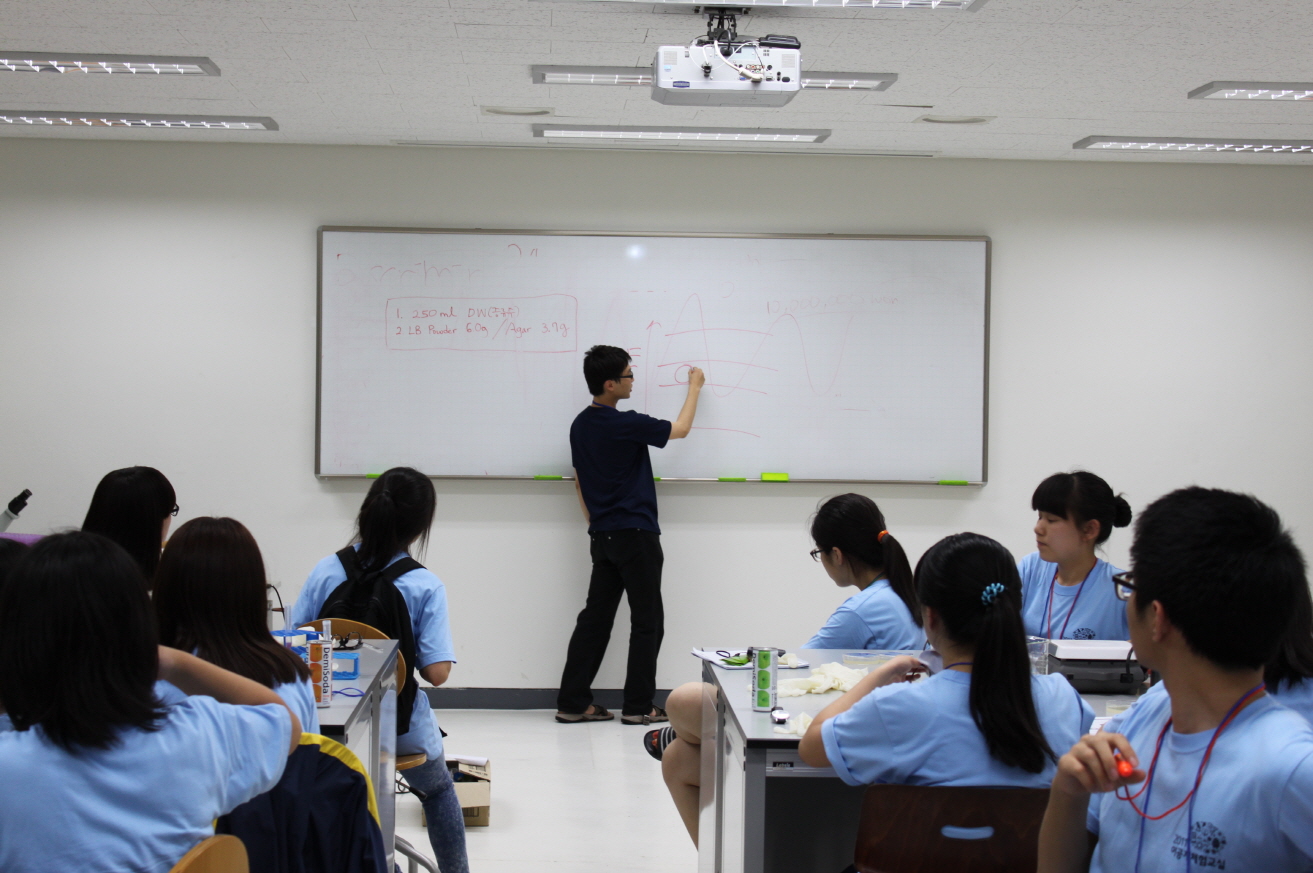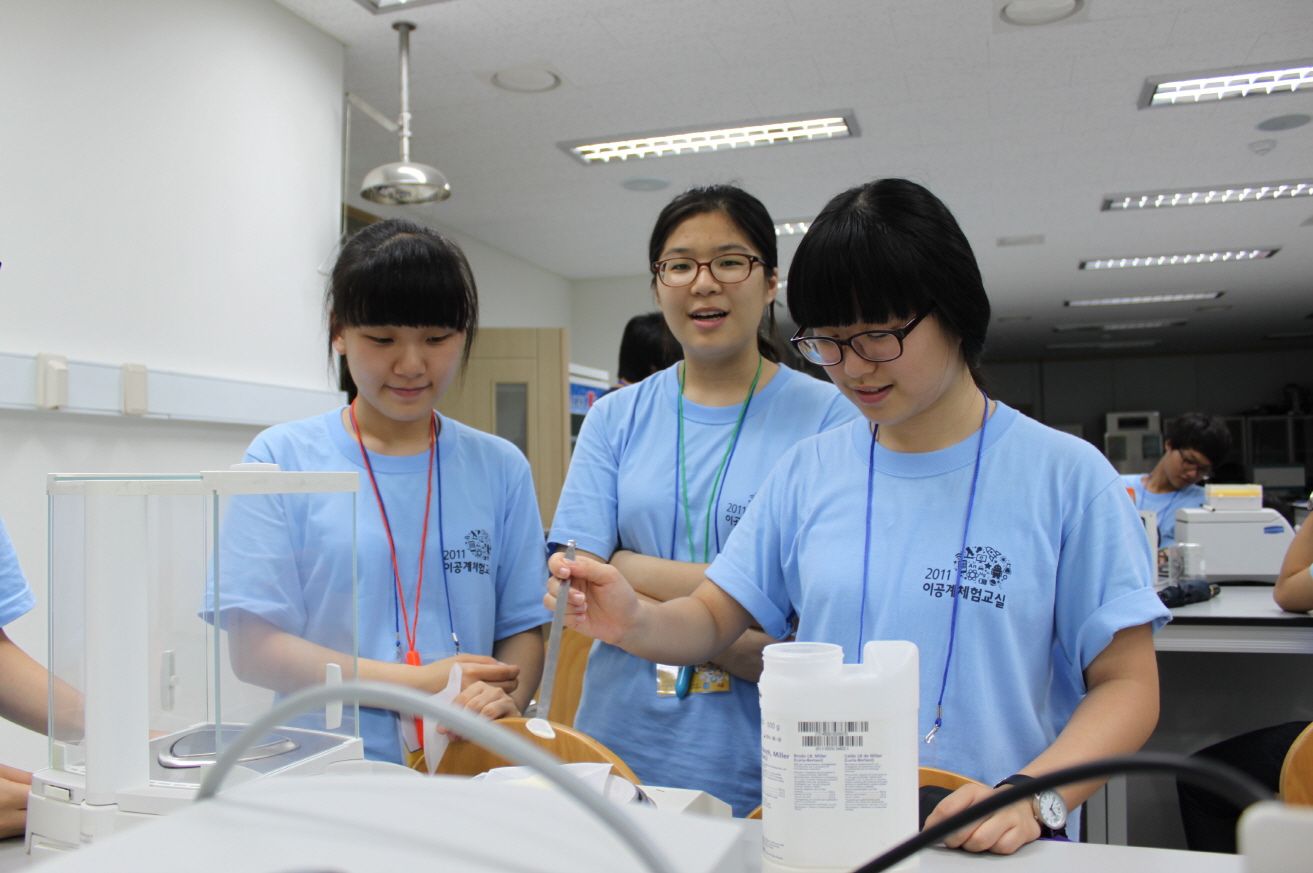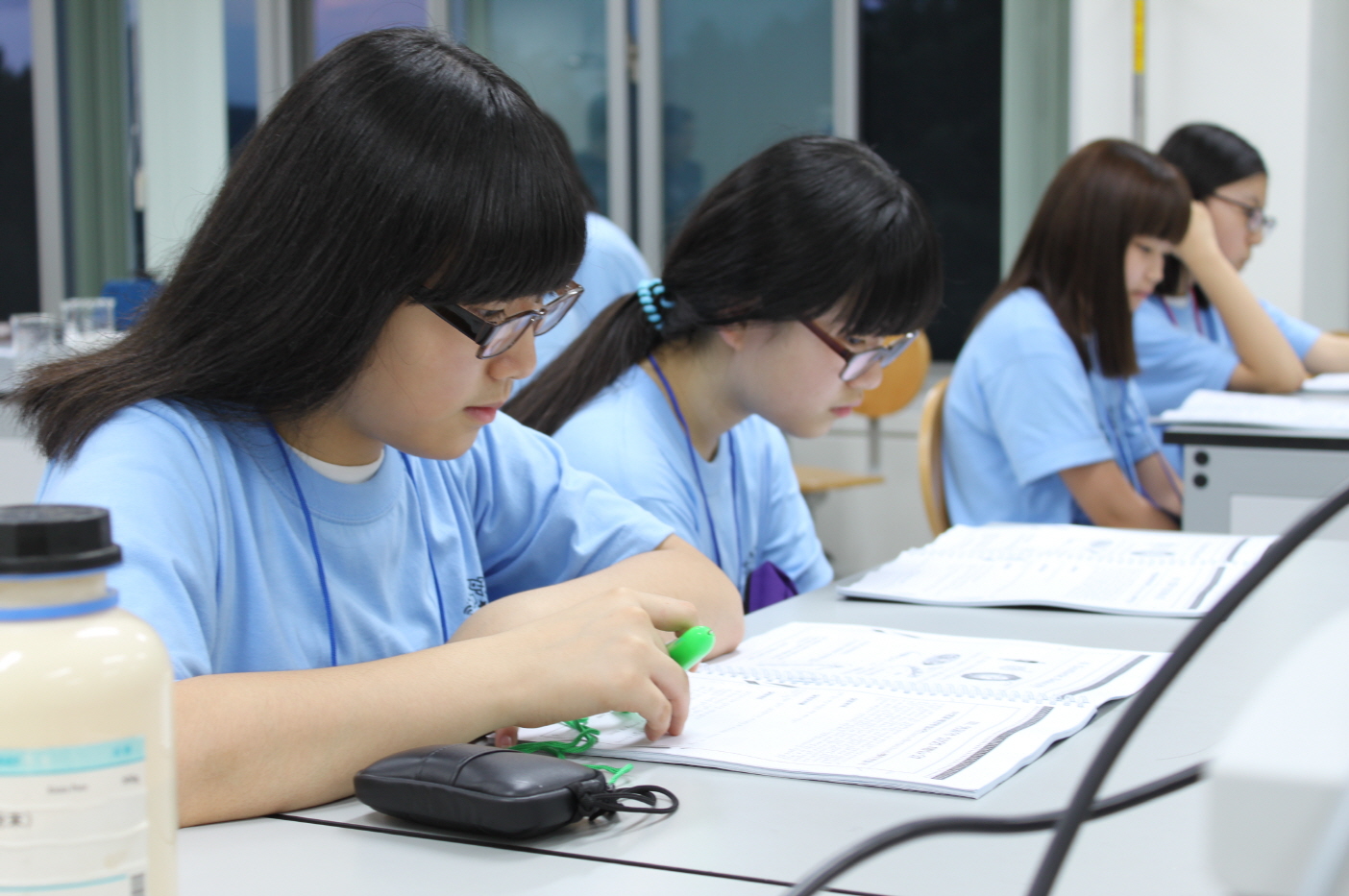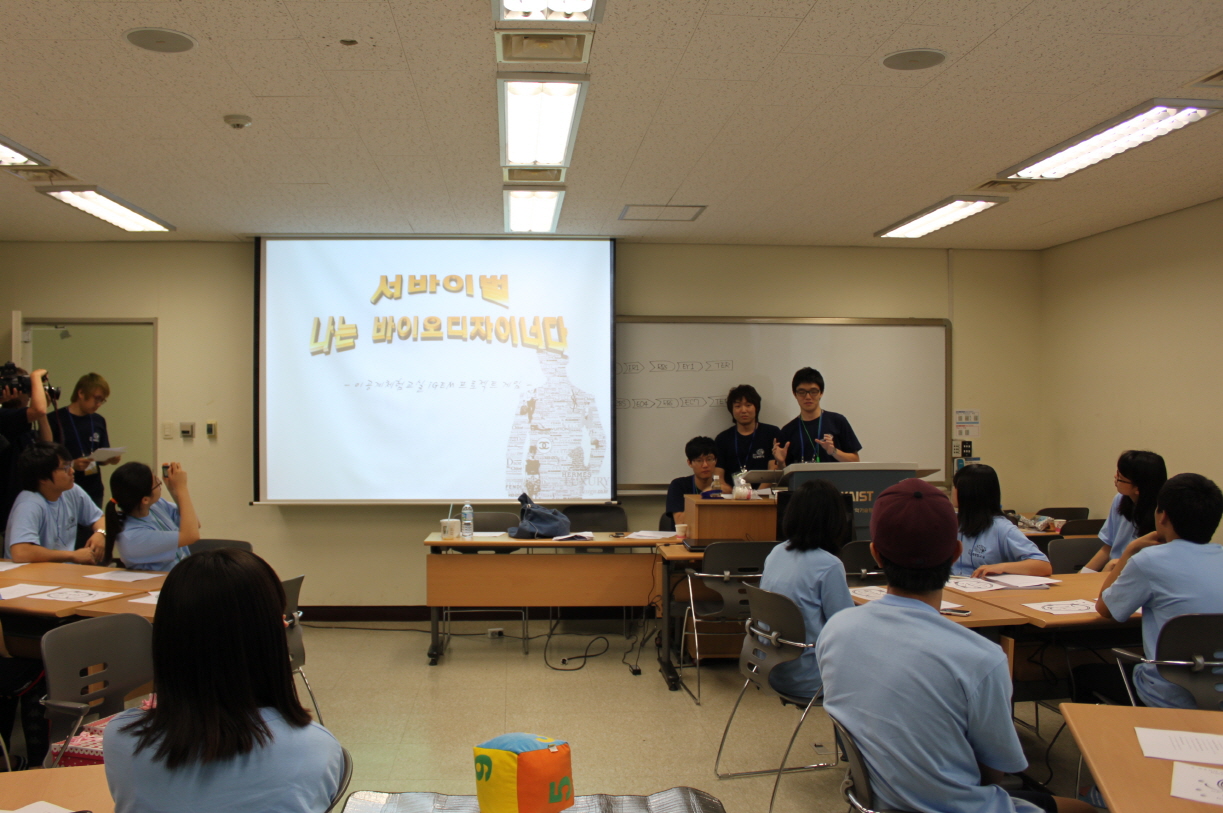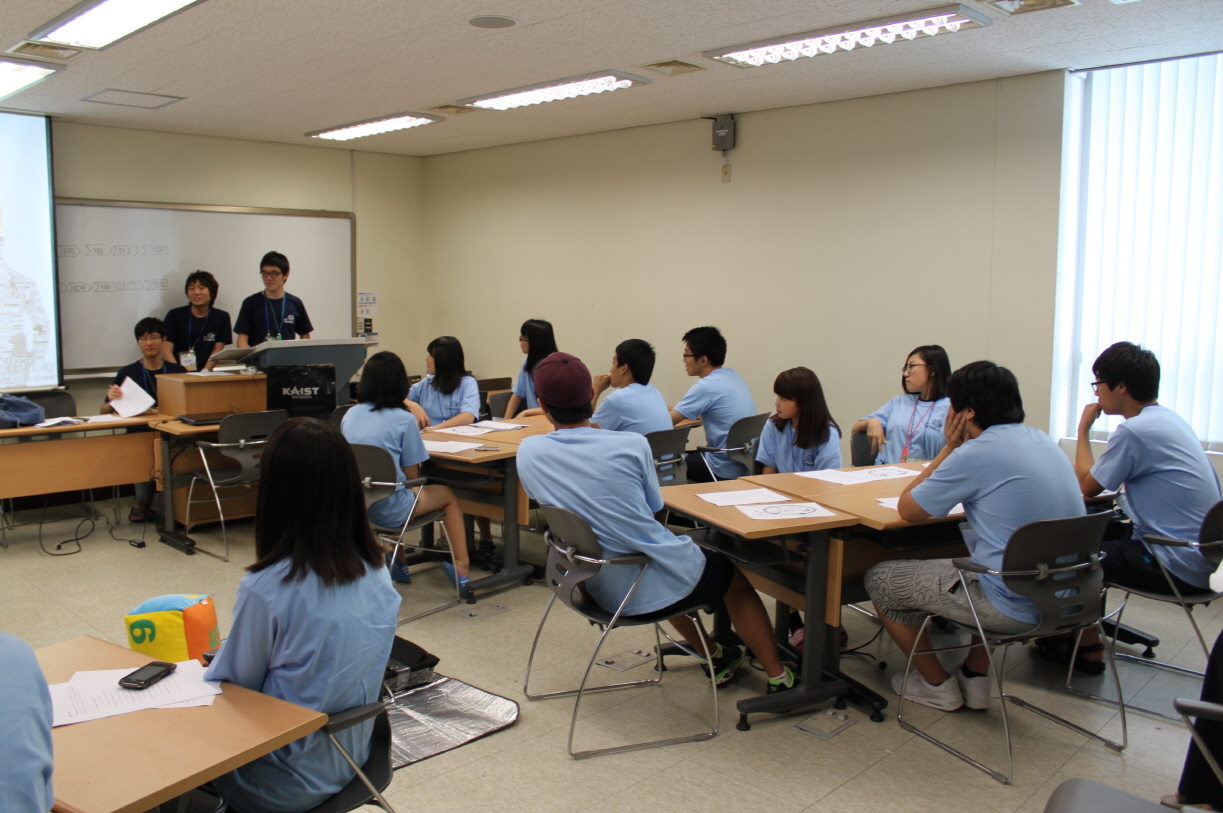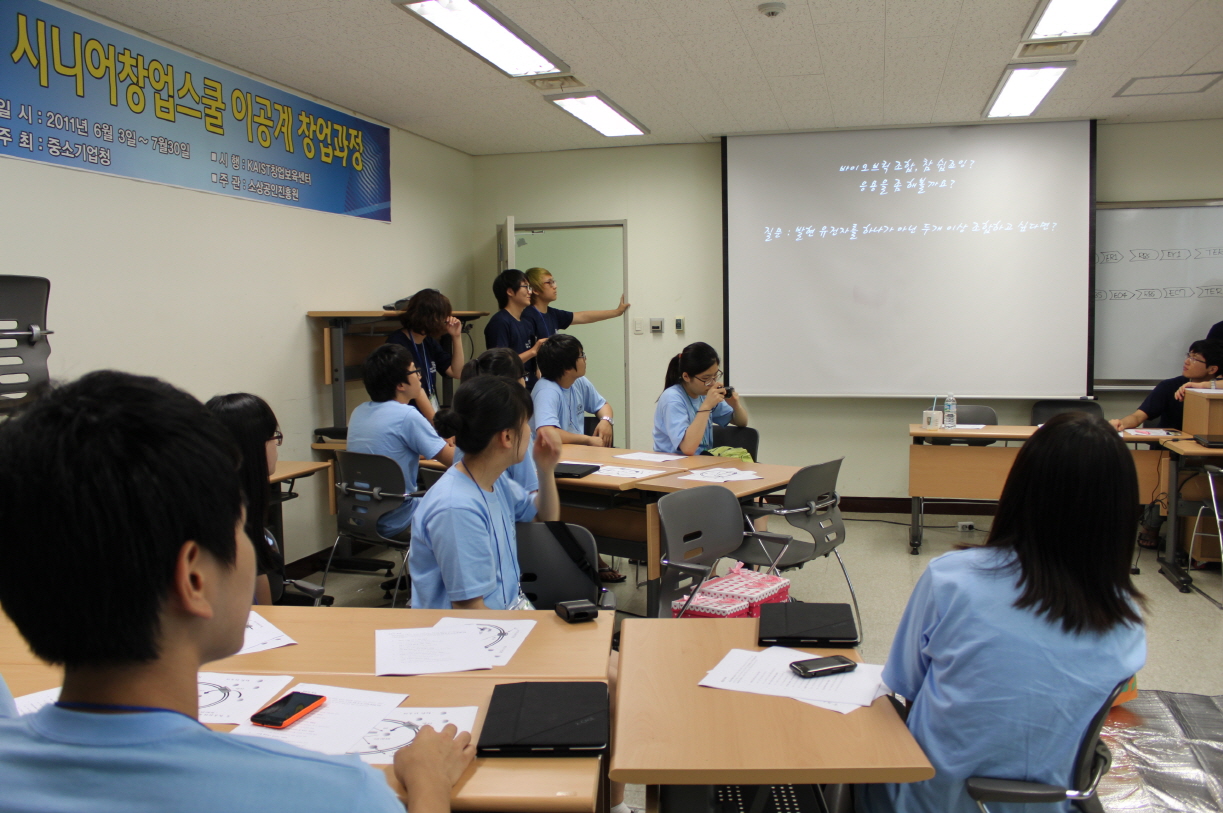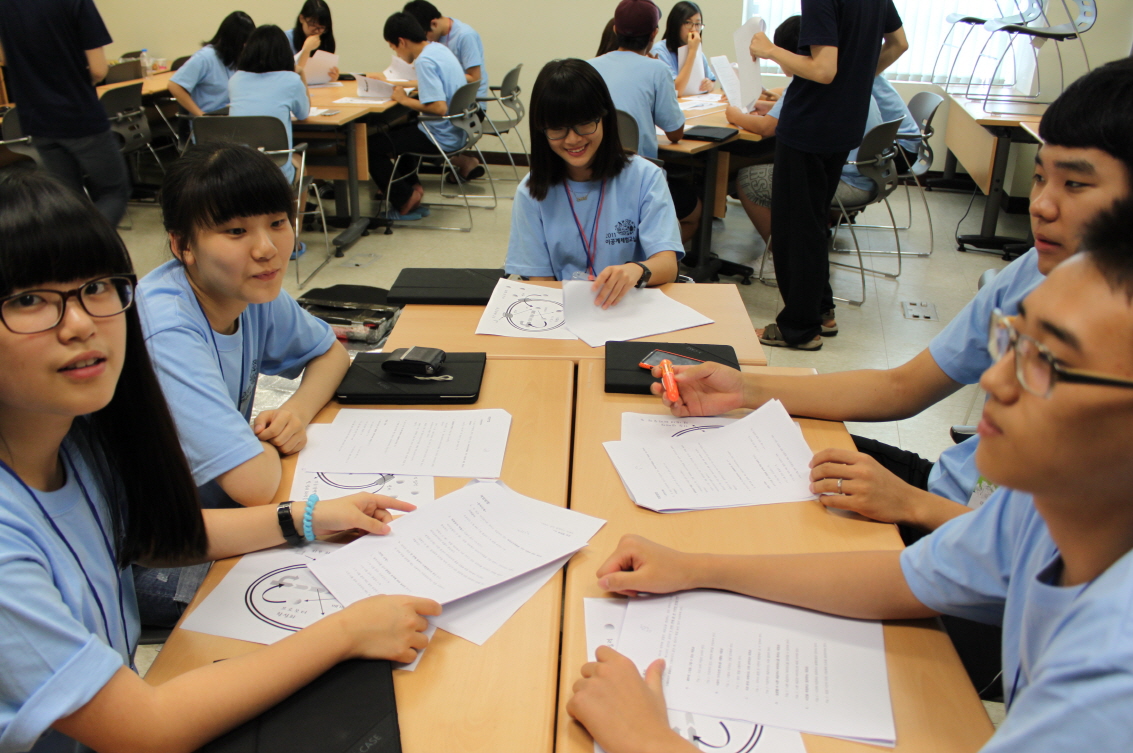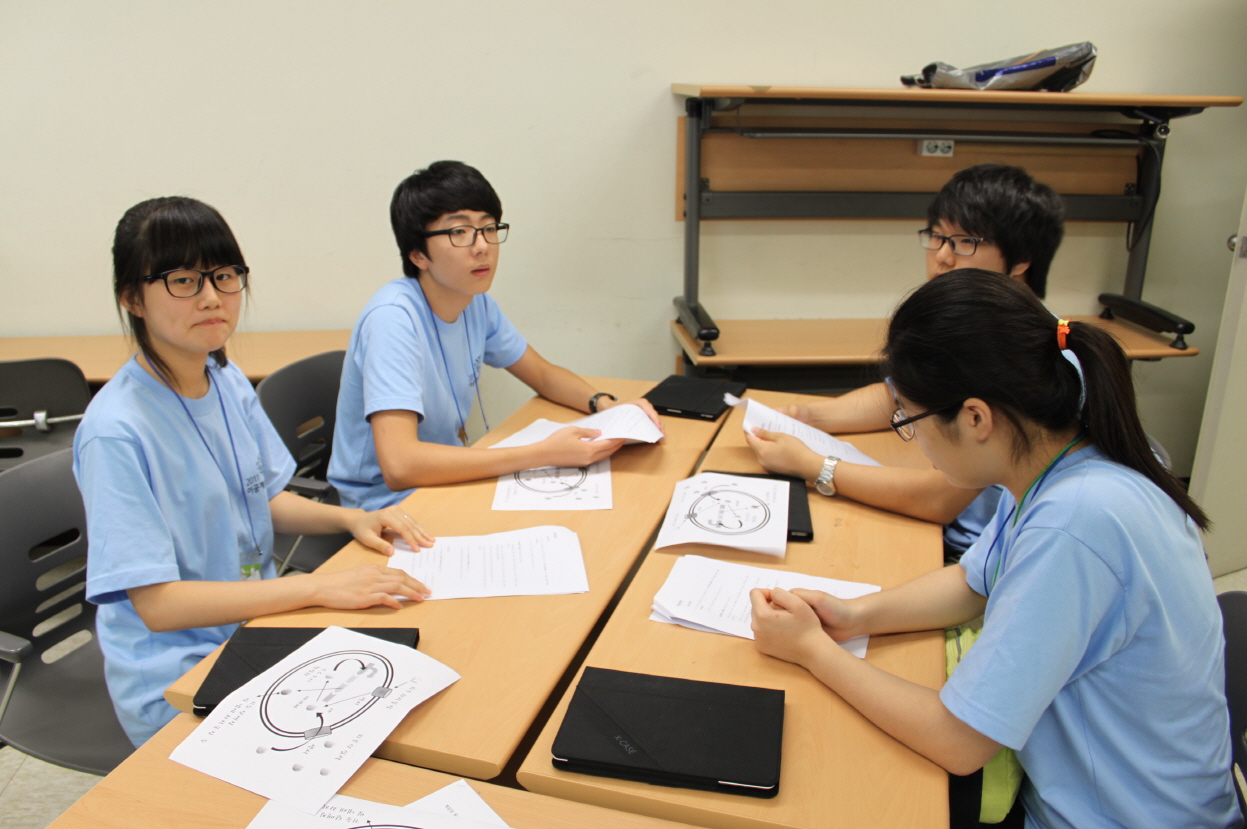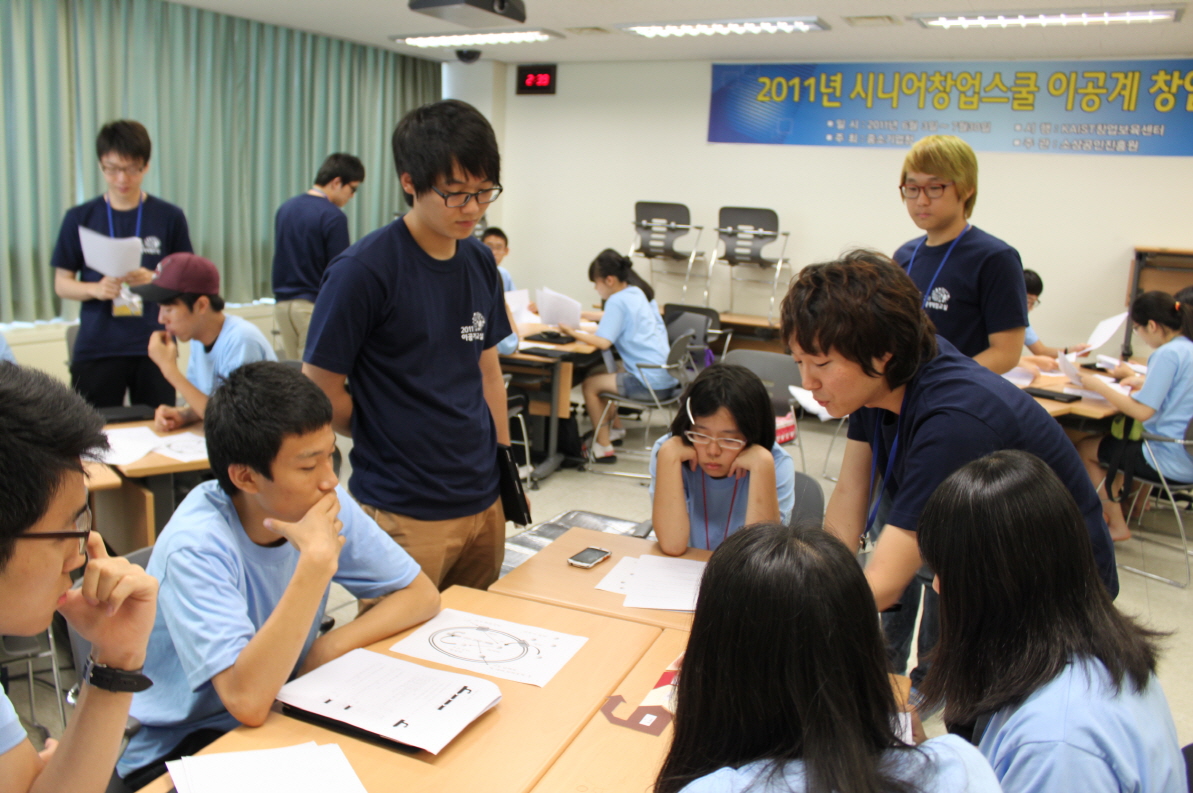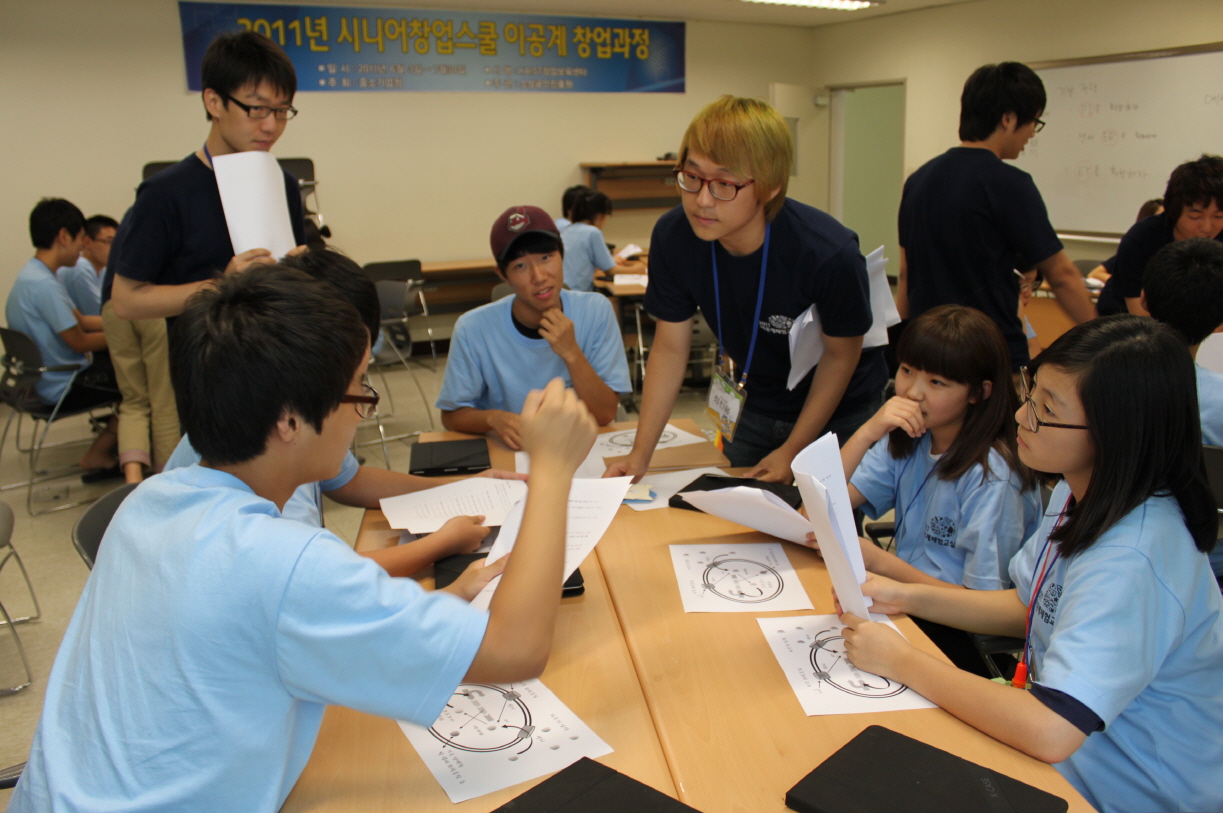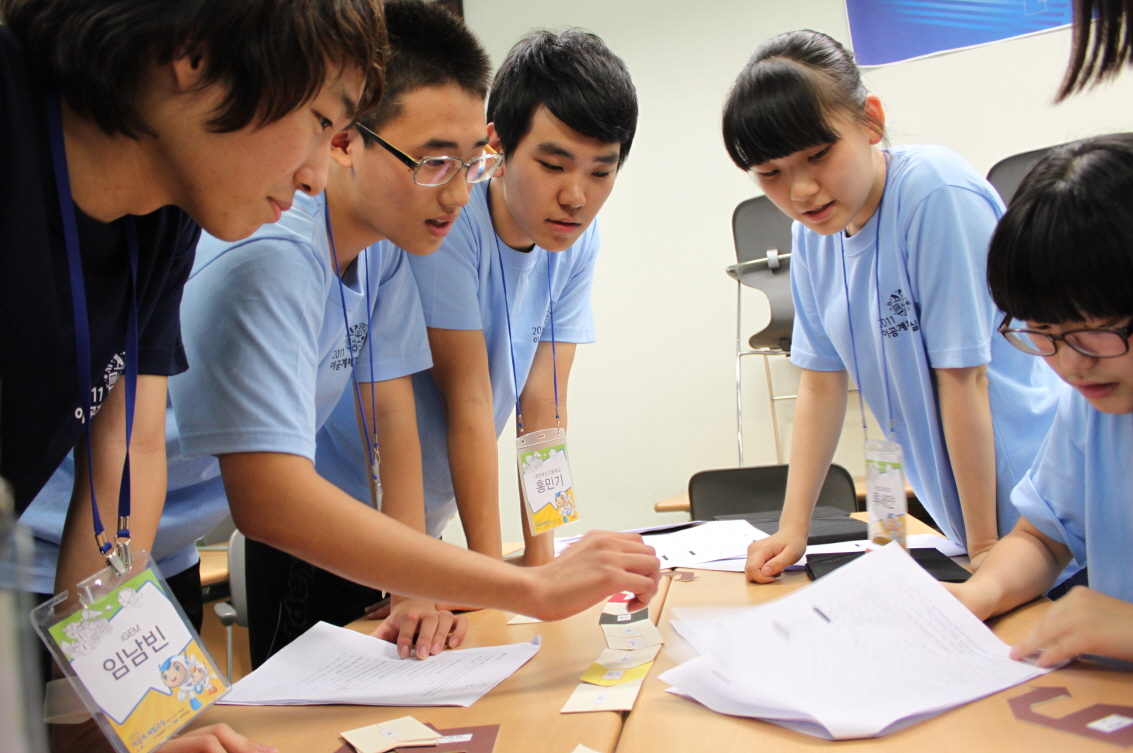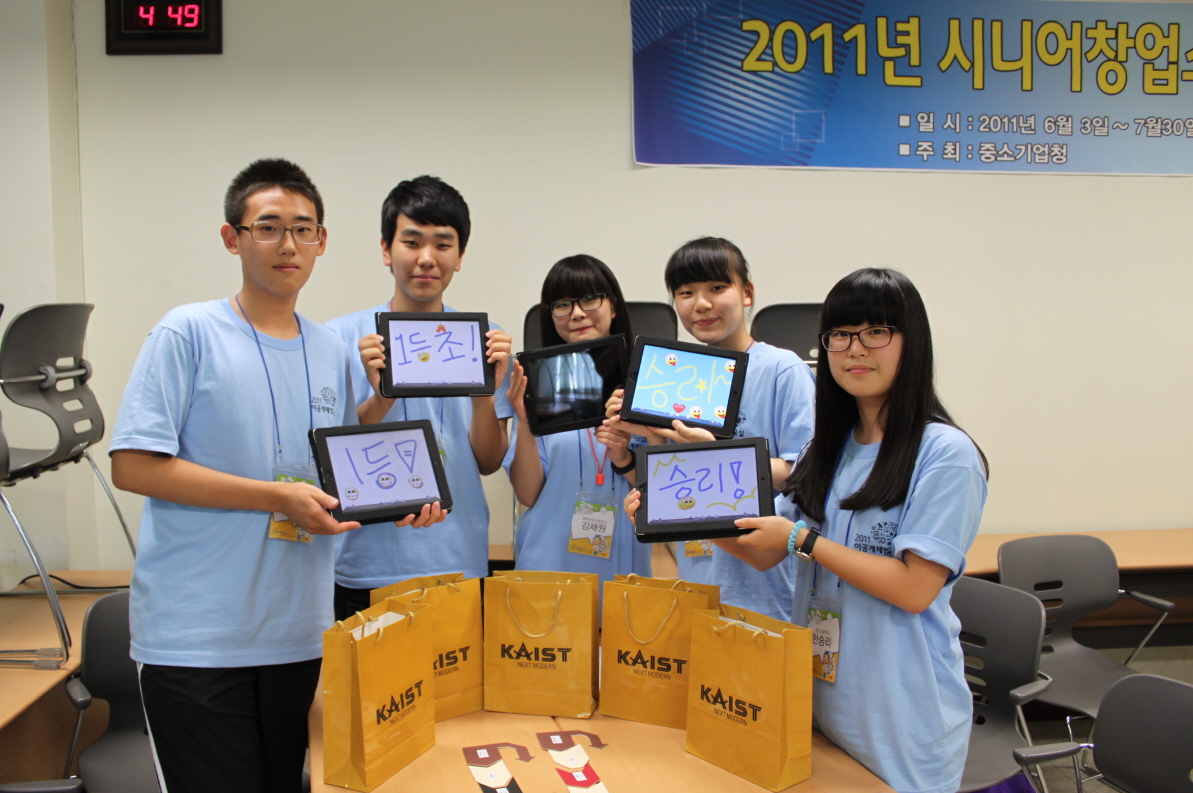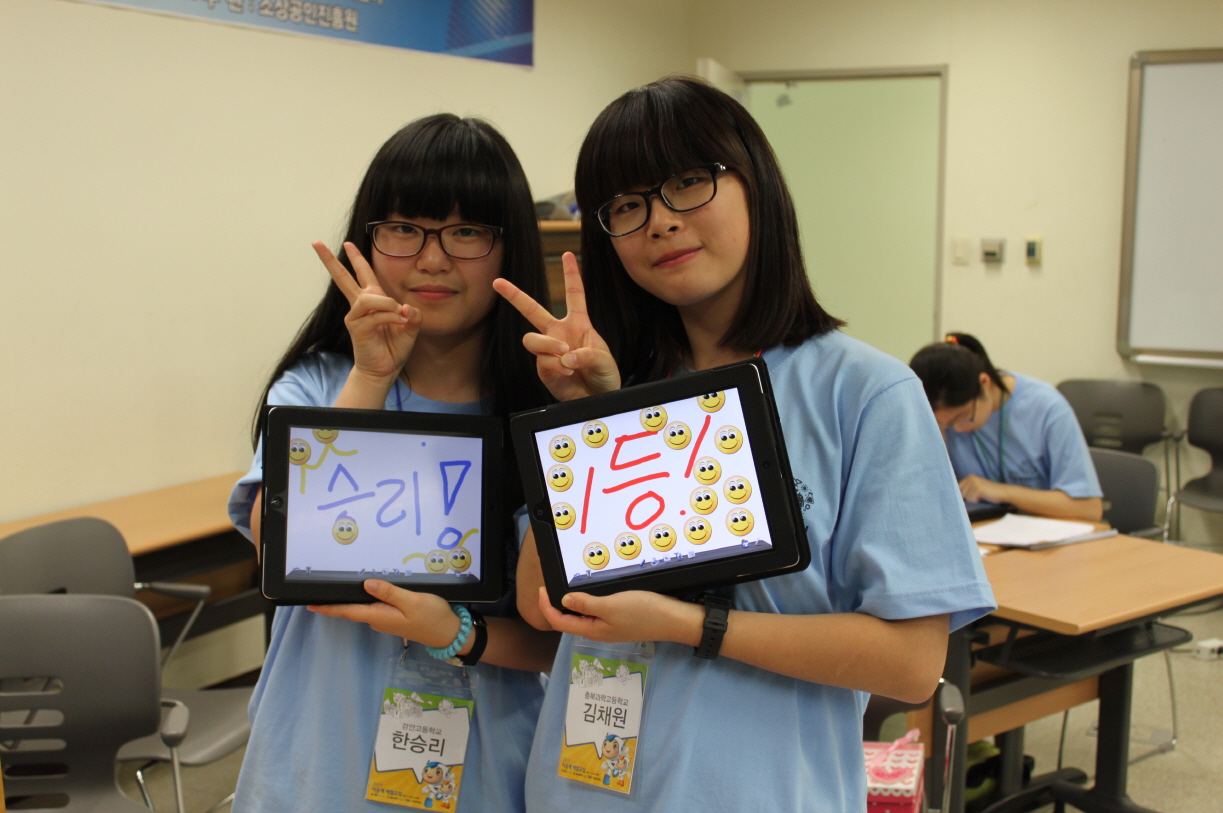Summer events/2011 KAIST summercamp
From 2011.igem.org
2011 KAIST iGEM summer camp
- for middle&high school students, July 27-29, 2011
On noon of July 27th, a hundred middle and high school students gathered at the Creative Learning Building at KAIST to participate in the “experience science and engineering camp,” hosted by [http://www.mke.go.kr/language/eng/index.jsp the Korean Ministry of Knowledge Economy]. All participants were winners in the first stage of the inventor’s contest out of a total contestant pool of 2500.
Each student was given the opportunity to choose a project of his or her choice. For the duration of the camp, the participants would follow the program planned by the teaching assistants of the project that they chose. The 2011 iGEM KAIST had prepared the project "I'm a Bio-Designer" in order to teach students fundamentals of synthetic biology. Nineteen students chose to participate in our project out of a total of five projects.
- The program included the following activities:
- Lecture
- Laboratory
- Board game
- Student project presentation
LABORATORY
At 7:30 p.m., the students arrived at the sixth floor of the Gung-Ni Laboratory building. The entire floor was reserved for the purpose of giving the students a chance to experience synthetic biology in real-life.
After seating down in pairs of two, the students were given a lecture about the medium used to culture E. coli. We told them about the composition of the Luria-Bertani culture medium, as well as how it is prepared and sterilized in the autoclave. Then, they were given the chance to make the LB culture medium themselves. Following a simple protocol provided by us, the students, eagerness burning in their eyes, got to work. The instructions are reproduced below.
- Put 100 ml of distilled water into a 250 ml Erlenmeyer flask.
- Put 2.5 g of LB broth powder and 1.5 g of Agar into the flask.
- Put a magnetic bar into the flask and put the flask on top of the stirrer.
- Turn on the stirrer and raise the temperature. Thoroughly mix the contents within.
- Wait until the temperature of the contents within drops to 60 degrees Celsius.
- Pour about 30 ml of the solution onto the petri dish.
Each student was instructed to prepare two petri dishes with the LB culture medium.
In conducting biology experiments, researchers frequently have to wait long hours in between procedures. For this reason, students experiencing biology in the lab for the first time may get bored. So we devised a game to entertain the student in the meantime that the solution solidified. Each pair of students was given two pairs of latex gloves. In a relay, the student pair puts on and takes off the glove one after another. The student pair with the fastest record wins the game.
When the medium solidified, we let the students leave fingerprints on one of the petri dishes so that they could check how dirty their fingers are on the next day.
Before moving on to the remaining petri dish, we showed the students red fluorescent proteins in the darkroom to arouse their interests. We then explained the origins and mechanism of fluorescent proteins. Using diagrams of an E. coli and a vector, we explained that foreign genes are frequently introduced into the bacteria in order to give it new qualities, such as red fluorescence.
To give the students a chance to play with synthetic biology, we handed out a small painting brush and an Eppendorf tube full of E. coli expressing red fluorescent proteins. On the remaining petri dish, the students drew pictures using the brush soaked with red fluorescent proteins. The next day they would observe the resultant picture under the UV light. Both petri dishes were put in the incubator afterwards.
To summarize the events of the evening, the students got a chance to experience synthetic biology laboratory in real-life. They made the LB culture medium themselves, observed fluorescence emitted by red fluorescent proteins, and drew pictures using red fluorescent proteins.
BOARD GAME
When all the students were seated in their respective teams, we explained to them about the concept of BioBricks in a PowerPoint presentation. We emphasized the importance of standardization as it facilitates communication among synthetic biologists and confers compatibility to synthetic biology research. We taught them about the most fundamental unit of an assembly, namely the sequence spanned by promoter, RBS, expression gene, and terminator. We also told them about the procedures taken to synthesize assemblies in the lab.
It was interesting to observe that some students thought that BioBricks were assembled by someone looking into a microscope and using a small needle to physically attach sequences of DNA within the cell. Some students also thought that there were only 46 sets of chromosomes in the entire human body, although that number should be multiplied by the number of cells in our body.
In order to consolidate their understanding on the material, the 2011 iGEM KAIST team had invented a board game on synthetic biology. After explaining the rules of the game, the round began. Students were completely immersed into the game. They discussed among themselves how they should combine the BioBricks to get E. coli to achieve the desired function. They actively asked us for help whenever they were stuck. They exchanged BioBricks with other teams to obtain the part they needed. Some bid a BioBrick to us in exchange for a question on synthetic biology. If they got the question correct, they could pick a BioBrick from a shuffled box full of BioBricks. Else, the chance turned to the other teams.
To the teams that mistakenly claimed they were finished, we pointed out the logical errors in their assembly and told them why their sequence of BioBricks could not be used to achieve their objective. Some teams did not use a promoter that is always in the induced state (it was an assumption made in the game). As a result, no proteins were expressed. Other teams did not put ribosome binding sites where they were appropriate. Some teams created too long of a vector or too many vectors that were impossible to synthesize in real-life. Penalties were given to them.
As such, we had installed many restrictions in the game that reflected real-life assembling of BioBricks, so that students could learn the ins and outs of synthetic biology without having to spend hours reading difficult textbooks. Although we were first concerned that they may find the game hard and boring, it was a surprise that they actually enjoyed it very much. By further developing such contents, we believe that spreading synthetic biology to the public will get easier and easier.
Kaist2011 hp 17.JPG
|
 "
"
